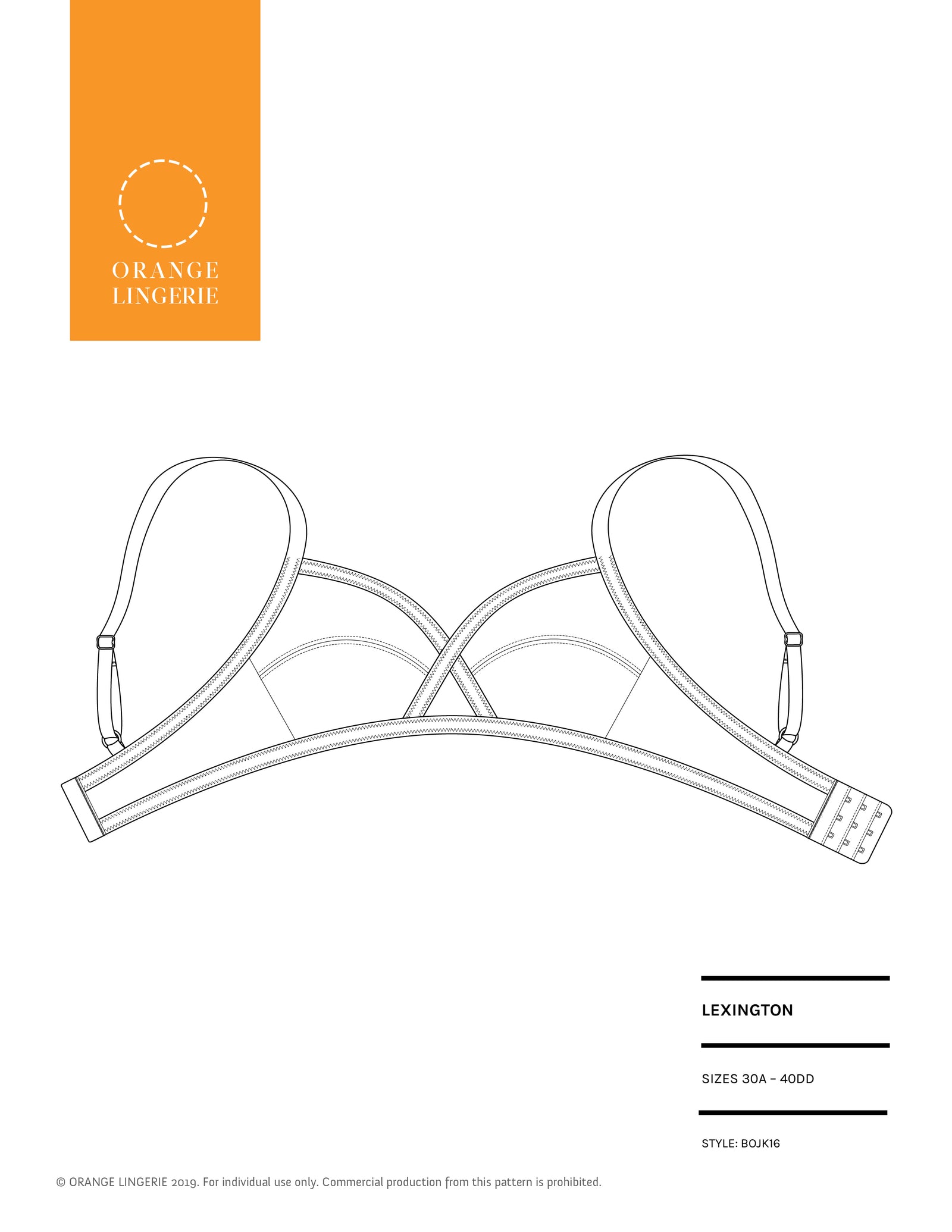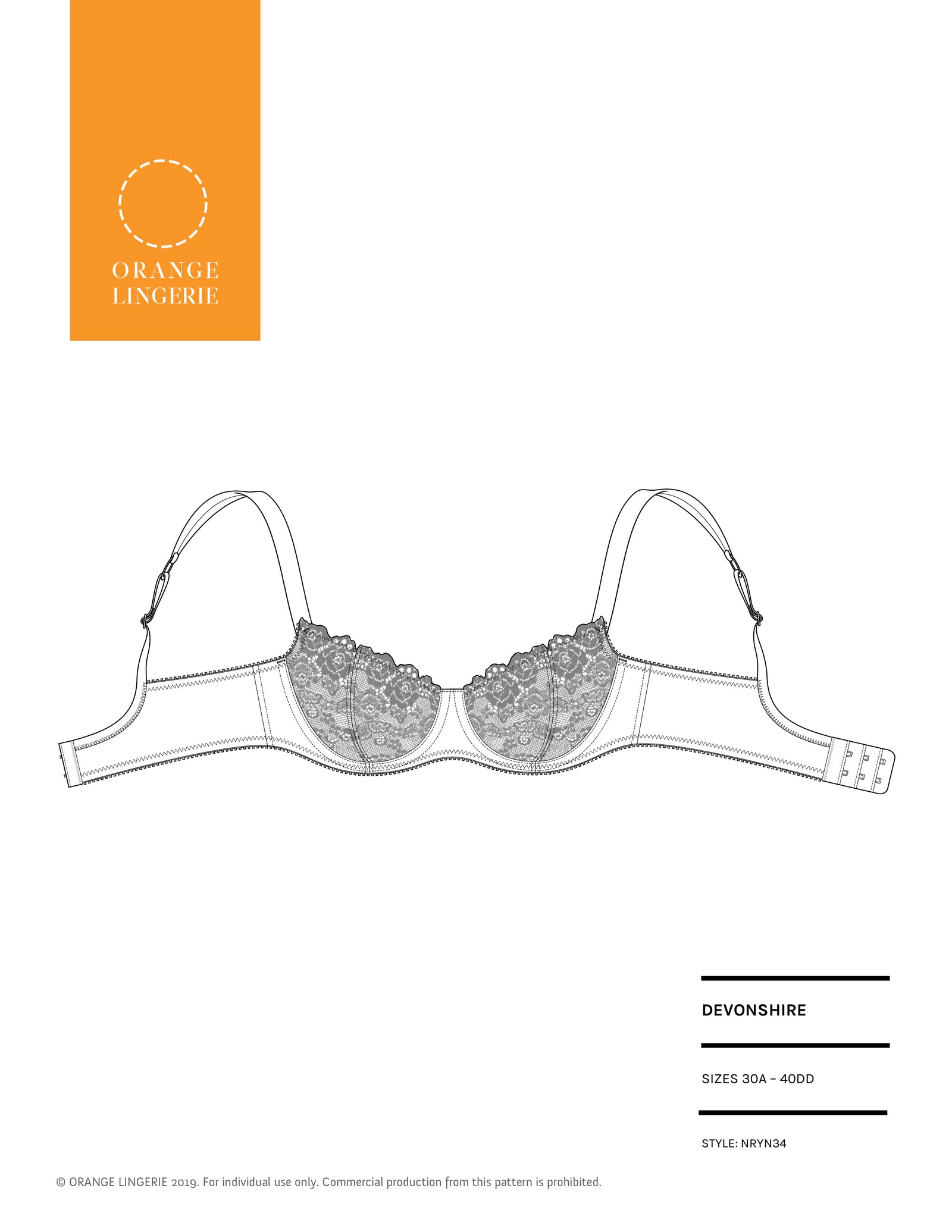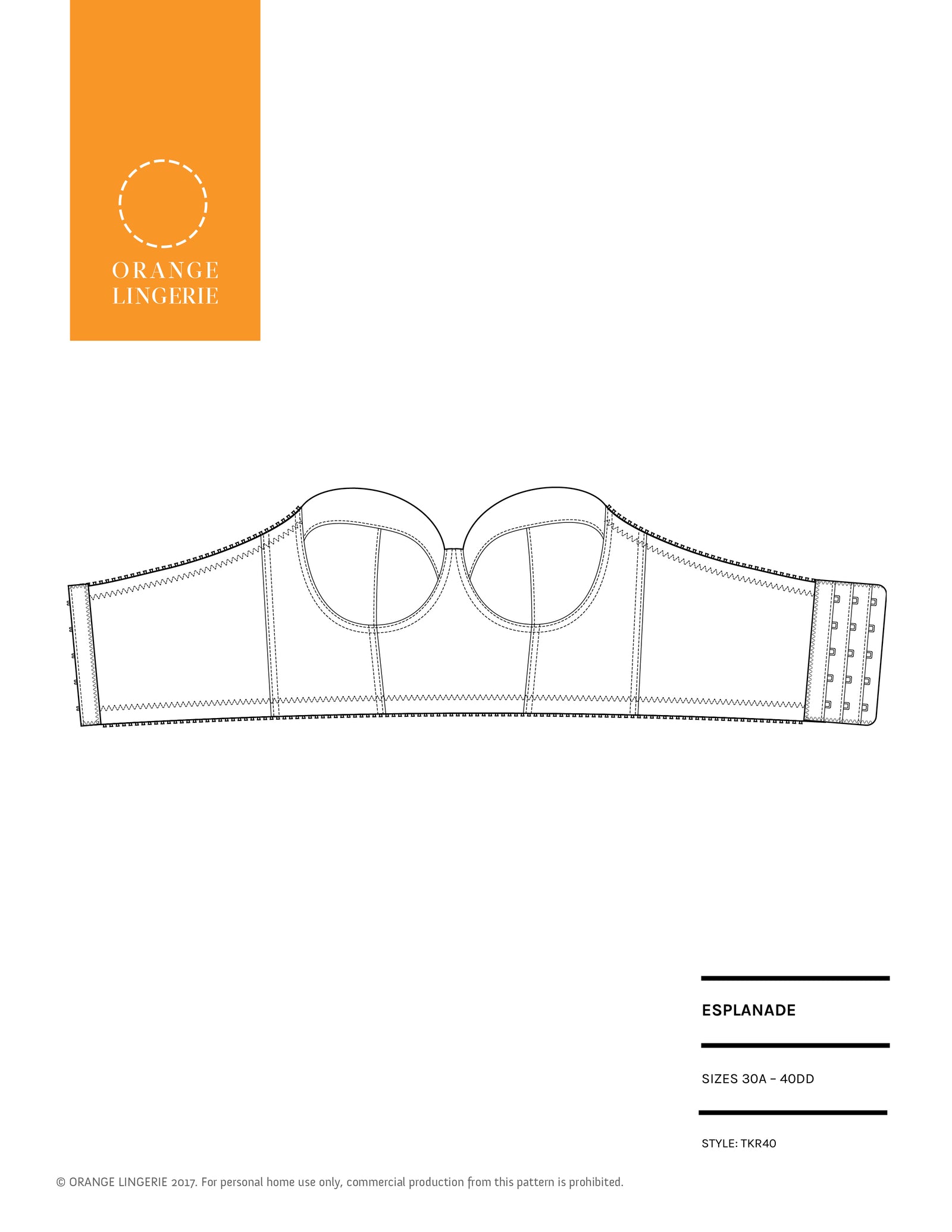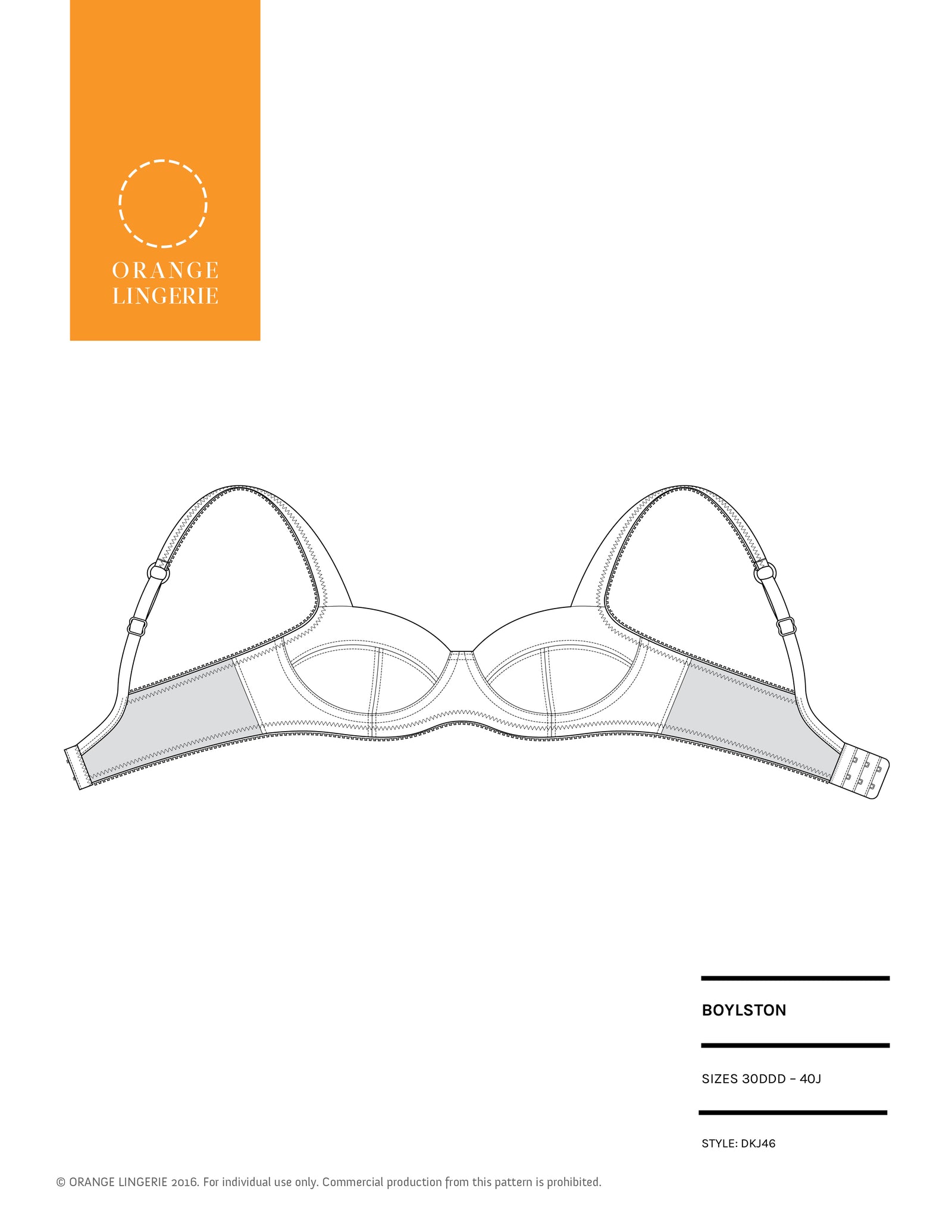
We work with a lot of silk in the Orange Lingerie studio! This was especially true over the last year as we created our Bellevue camisole, Newell slip skirt and Richdale tap shorts sewing patterns (often referred to as the 'Silk Collection') all using silk charmeuse fabric. Since each of our newest sewing patterns recommends using a lightweight silk material, I thought it would be helpful to talk about what to look for when shopping for silk fabric for these garments.
Let’s start with why we use and recommend silk charmeuse. Aside from the obvious reason - silk is a beautiful fabric to have against your skin, and you deserve to drape yourself in it - there are very practical reasons why silk works best for these projects.

Bellevue Camisole and Richdale Tap Shorts
Pure silk will not fray the way a blend or poly fabric will, which makes it easier to sew and handle. The French seams we recommend for construction require a bit more handling than your average seam, so having a fabric that doesn’t unravel every time you look at it sideways is a necessity.
The other reason to use silk instead of a substitute fiber is for the drape of the bias. The Newell slip skirt and the Bellevue camisole are both cut on the bias and designed for the drape of silk charmeuse. In synthetic fabrics, it’s harder to know how it’s going to drape, and you might end up with a lot more flounce or stretching than you were expecting.
When shopping online, there are a couple ways to evaluate silk: momme (pronounced “moe-mie”) and weight. Mommes (mm or sometimes m/m) are the units to describe the measurement of density in the silk fabric. 10mms means there are 10lbs of silk in 100 yards of 45” wide fabric. I find it easier to think in terms of yards or meters so 8mm is equal to about 1 ounce per square yard or 35 grams per meter.
The more mommes in a yard or meter of fabric, the more silk fibers there are. The table below provides an overview of the general mommes for some of the more popular weaves of silk fabric.
| TYPE OF SILK | MOMMES |
| Gauze | 3 to 5 |
| Organza | 4 to 6 |
| Chiffon | 6 to 8 |
| Habotai | 12 to 16 |
| Crepe de Chine | 12 to 16 |
| Charmeuse | 12 to 30 |
| Raw Silk | 35 to 40 |
For the Silk Collection sewing patterns, you want to look for a momme between 16mm and 25mm. Anything lower than 16 and you run the risk of transparency and anything higher than 25 is likely to be too heavy to drape nicely. I mostly use silk charmeuse that is around 19mm.
If you don’t see the momme measurement for a fabric, you can look for the weight of the fabric. This is generally described in units of either grams per square meter, referred to as GSM, or ounces per square yard, annotated as oz/yd. 8 mommes is the equivalent of 35 GSM or 1 oz/yd. For the Silk Collection sewing patterns, I recommend looking for a fabric weight in the 70-108 GSM or 2-3.2 oz/yd.
When evaluating silk for these garments, you must also consider drape. Drape, sometimes referred to as the “hand” of the fabric, is how the fabric hangs under its own weight. Drape is entirely dependent on the type of weave used and not its weight. Since the Bellevue and Newell are both bias-cut, getting the right drape is extremely important to the fit and overall aesthetics of the final garment.
Of course drape is best evaluated in person where you can handle the fabric and hold it on the bias to get a sense of how it hangs. Generally online stores photograph fabrics in a casual, dropped-on-the-table manner so that you can see how it drapes. Occasionally they will show a picture of the fabric draped on a dress form or a video of the fabric in motion. What you are looking for are soft, easy folds in the fabric that are neither falling over itself floppy, nor rigid and stiff.
So, given all these parameters, silk charmeuse and silk crepe de chine are clear winners. These fabrics have a smooth, supple texture and a delicate hand that will drape beautifully.

silk charmeuse
photo credit Mood Fabrics

silk crepe de chine
photo credit Bloomsbury Square Fabrics
You may be wondering about all the other wonderful silks. Well, I have occasionally run across a silk georgette that tempts me, but the texture inherent in the weave of a georgette makes it tricky to use on the bias and if I can find one that is light weight enough, it is too transparent. Likewise, silk chiffons are too transparent for these garments and would be better suited to a lined style.
Below is a picture of a silk georgette print and you can see the texture. This would not work well with the silk collection garments.
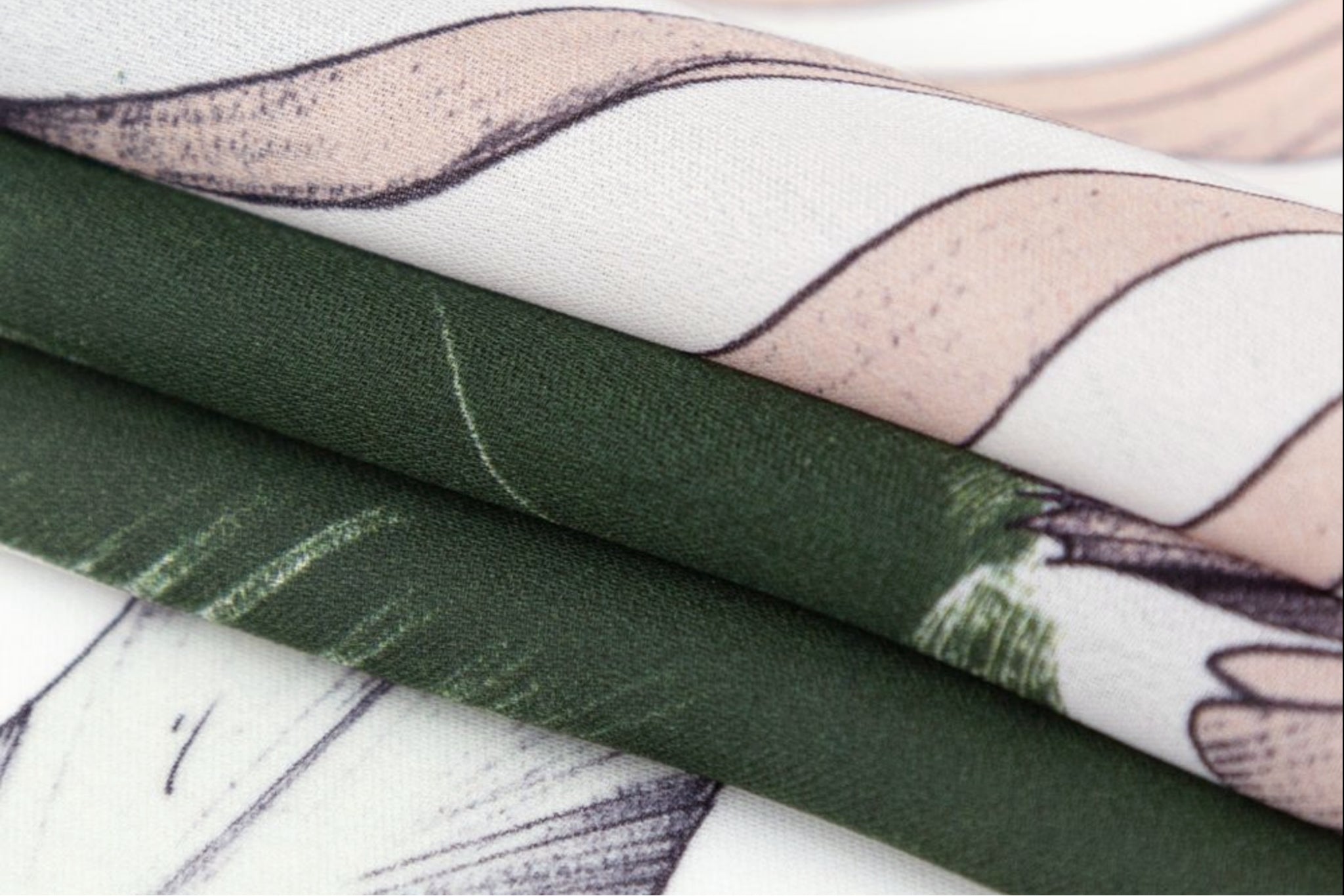
silk georgette
photo credit Mood Fabrics
Below is an image of silk chiffon and you can see how transparent this material is.
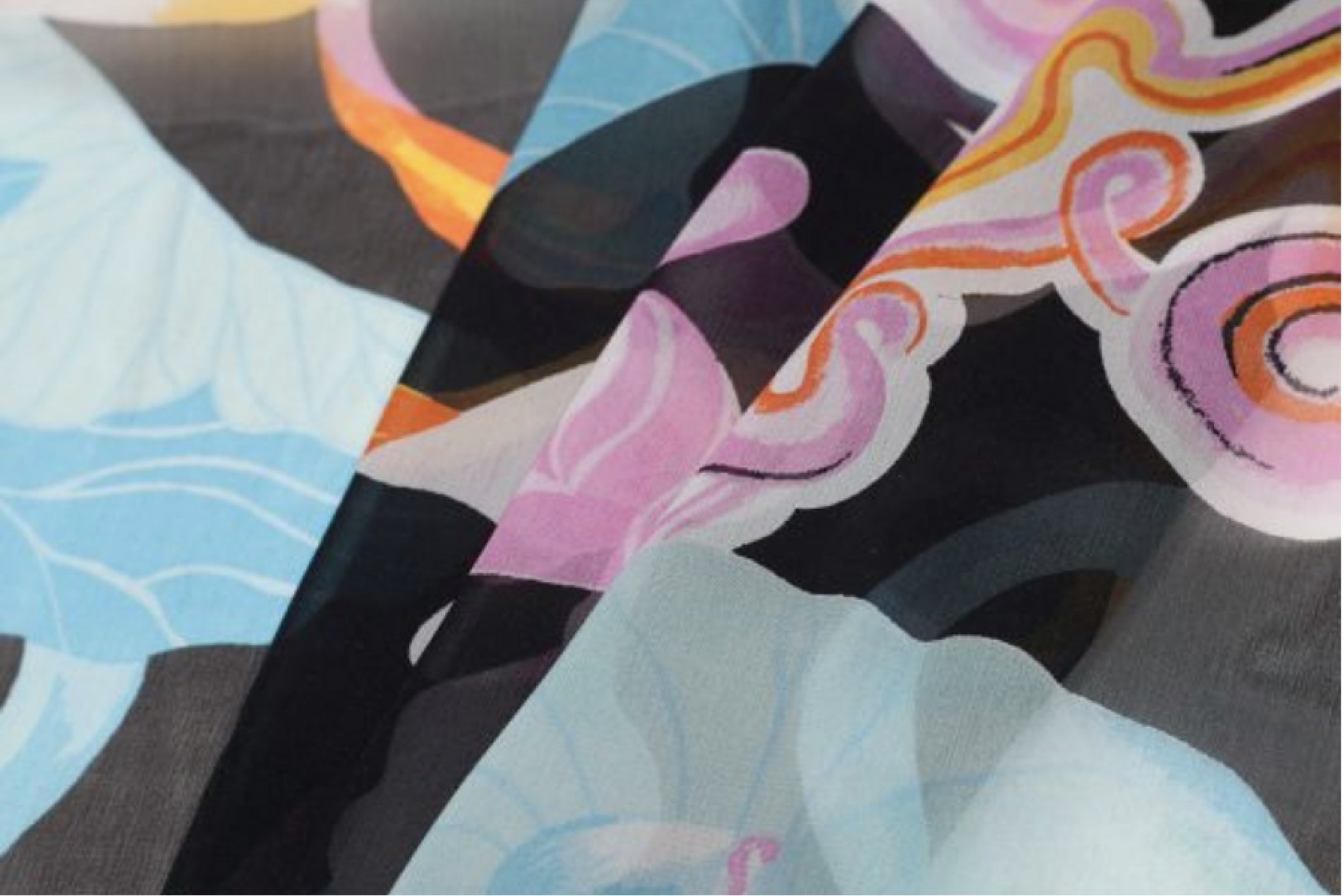
silk chiffon
photo credit Mood Fabrics
Heavier silks like dupioni, shantung or taffeta are too stiff and crisp to drape well on the bias and should be avoided entirely for the Silk Collection garments.
Below is a picture of silk shantung and you can see the stiff almost crisp folds indicating a lack of fluid drape.
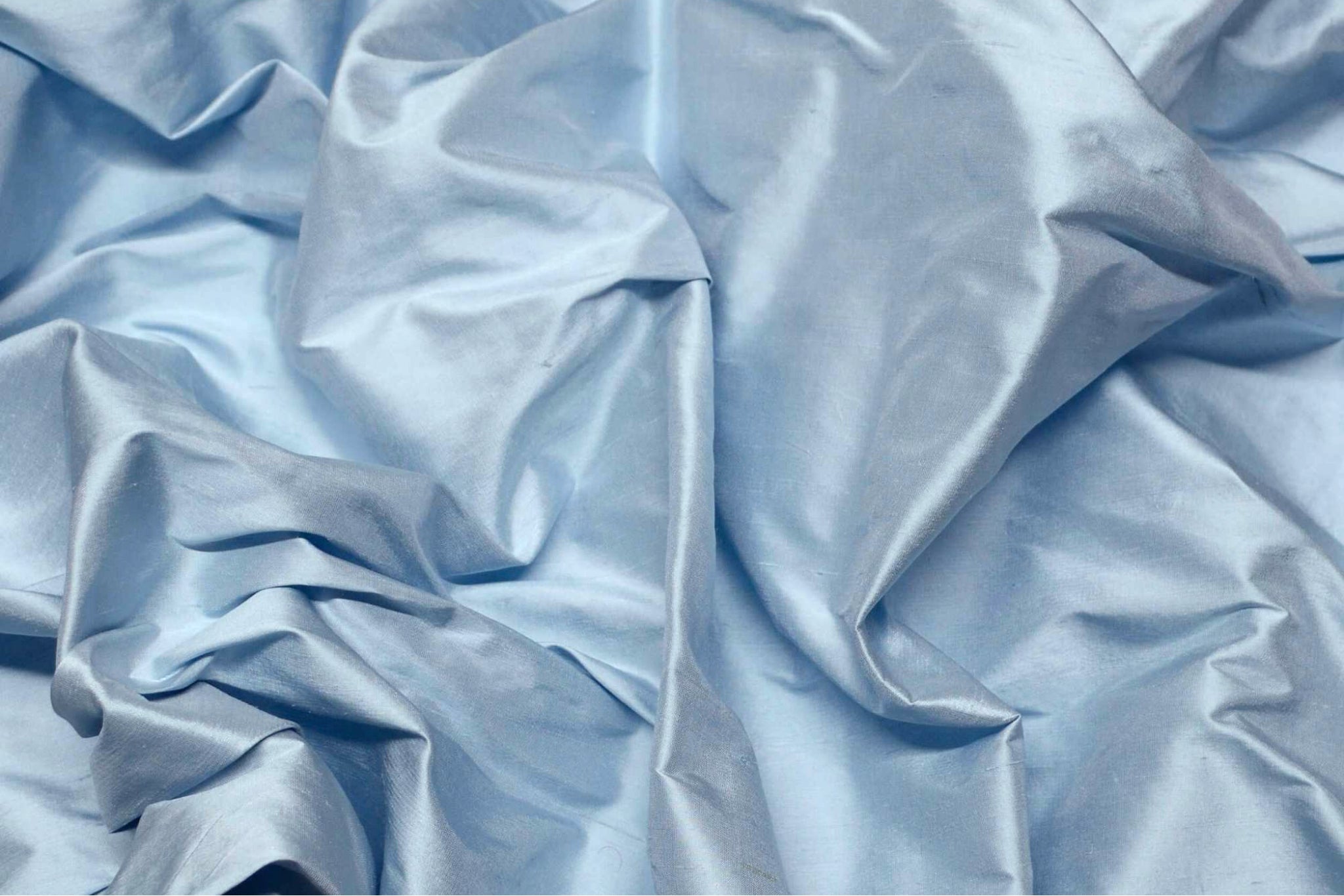
silk shantung
photo credit Silks Unlimited
Also, try to avoid any silks that are blended with spandex or Lycra. Not only is the stretch unnecessary, but it will also mess with the bias drape. Also, while I know it is a common “hack” I don’t recommend using a stretch silk cut on grain for the Bellevue camisole or the Newell slip skirt, they just will not fit or hang properly.
Finally, while fabric shopping be sure to keep an eye on any print or motif. With bias cut garments you really want to avoid any directional prints. The fabric in the image below is directional. Cutting this material on the bias would produce some strange striping on the garment.

directional motif
photo credit Mood Fabrics
I also like to be sure that the scale of the print is proportional to the garment size. I like any print to be recognizable as such and I want the best parts of the print to be represented on the garment. This means considering the print size and repetition. When shopping online for prints it is helpful to look at a larger layout of the material, preferably using an image with a ruler placed on the material.
The fabric pictured below has a very large print. While the skirt has enough real estate to showcase some of the lovely variation, the entire front or back of the camisole would just be dominated by a single element of the print.

very large print
photo credit Mood Fabrics
While the below print is on the larger side, there is high repetition and overlap of the elements and it would work for any of the Silk Collection pieces.

large print with high repetition
photo credit Mood Fabrics
This may all seem like a lot to keep in mind but there many beautiful, luxurious options within the parameters of weight and drape described above. You can find more links to quality silk fabric sources on our Resources page.
Have fun shopping and sewing up the new Silk Collection styles! As you sew up your garments, don’t forget to tag #BellevueCami #NewellSkirt #RichdaleShorts and #OrangeLingerie so I can find all them all!







